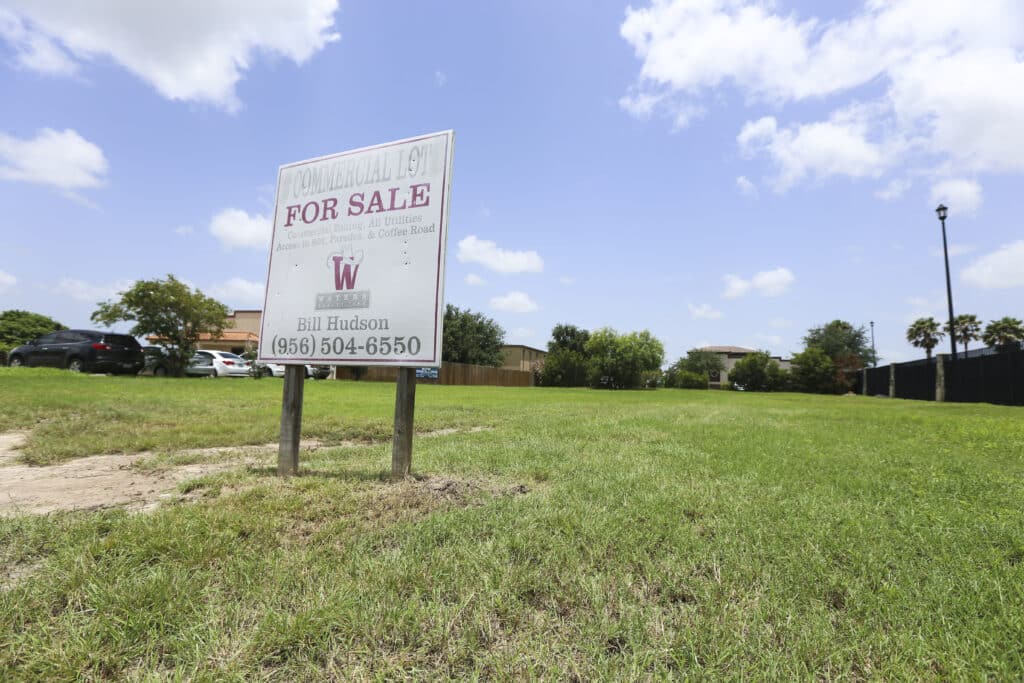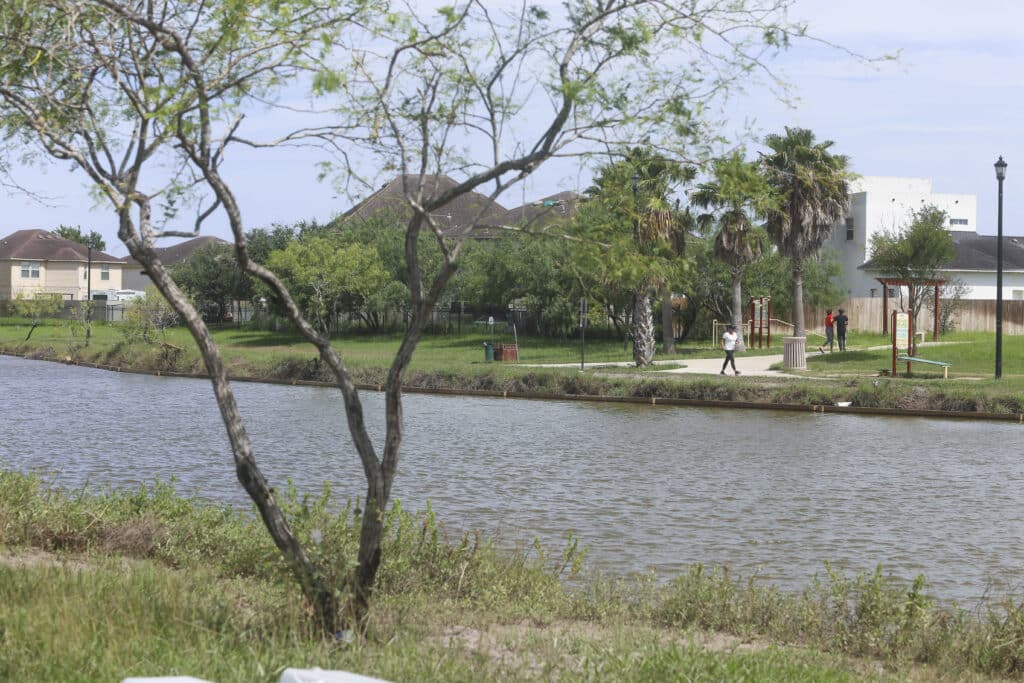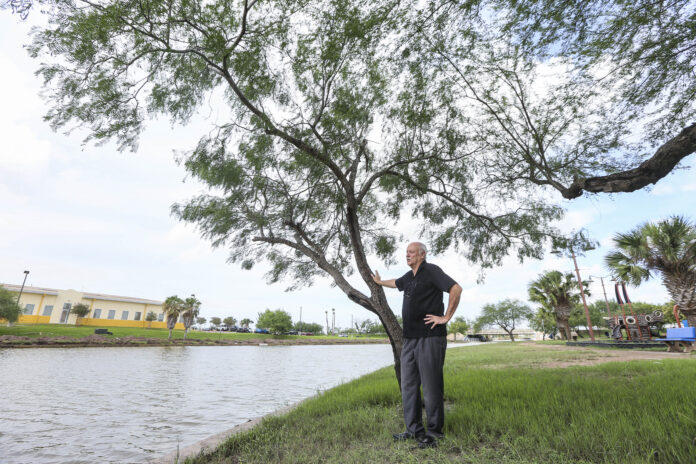The final chapter of one of Brownsville’s most ambitious land development stories, one spanning nearly three decades, is coming to a close.
The last lot in Bill Hudson’s Paseo de la Resaca sold in June, the culmination of a project that started in 1994 and today features some 2,000 homes, 1,000 multifamily residential units, three schools, 1 million square feet of commercial buildings and a 120-acre linear park with eight miles of trails along Resaca Calmada, which was excavated as part of the project.
Hudson, the Brownsville native who managed it all, said the first commercial building to be built on the 1,000-acre site anchored by Ruben Torres Boulevard and Paredes Line Road was the Bank of Texas, now BBVA Compass, at that intersection. The last lot, located on Thor’s Hammer Boulevard just north of Coffee Port Road, was sold to MB&B Gemological Services.
Also currently under construction in Paseo de la Resaca are a new Jubilee Academies School, D-Tronics, Jiffy Lube and a medical plaza. In addition, the law firm Villarreal & Begum also is expanding its offices on Ruben Torres. H-E-B Plus, Walgreens and Walmart serve as major commercial anchors for Paseo de la Resaca, which was originally a farm purchased in 1937 by Hudson’s grandfather, Hubert R. Hudson, who in 1938 built the family home Casa Poinciana, which still stands at 1950 Paredes Line Rd. and houses Burton, McCumber & Longoria.

The 1,000 acres, which still grazed cows until the late 1990s, straddles Ruben Torres about a mile north to south, and stretches for a mile and half east from the Brownsville Country Club, Bill Hudson said. His father, Hubert R. Hudson Jr., was opposed to borrowing against the land to develop it, though the younger Hudson recognized the potential and, when his father died in 1993, pitched the idea for Paseo de la Resaca to his siblings. Planning began soon thereafter and ground was broken in the late 1990s.
Hudson said he’d originally wanted to develop much more of the property commercially until a consultant explained that it should be mostly residential, and home buyers and residents would drive the commercial aspect, a successful formula judging from the volume of commercial development — which has accelerated in recent years — in Paseo de Resaca.
“We ended up with I guess about half a million square feet of commercial,” Hudson said. “There’s a million total square feet of non-residential buildings. That includes three schools, soon to be four, and then government buildings and the like. The actual retail and office aspect is about half a million square feet. That’s on 100 acres. There’s 500 acres of residential single-family (homes). There’s about 100 acres of multifamily. It’s a community within a community.”
What he calls the “Thousand Acres of Excellence” has added more than $400 million to the city’s tax base and employs hundreds of people at the various businesses and other entities located there, Hudson said. From his perspective, the jewel in the crown is the 120-acre Paseo de la Resaca Park, now undergoing $5 million worth of seawall improvements along the park’s 40,000 linear feet snaking through the accompanying master-planned residential development.
“I created four miles of resaca that’s all public access,” he said. “That’s a gift, giving back.”
Hudson requested that the city create a Public Improvement District for the property, through which he, as the developer, invested millions of dollars on initial infrastructure. He had originally intended to hand the park over to the city, but went with the PID to ensure its maintenance in the event subsequent administrations made a low priority of park maintenance. The PID has a budget of about $500,000 a year, Hudson said.

“All the development stuff was fun,” he said. “I feel like I brought first-world housing to Brownsville en masse. I’m particularly grateful for Richard Browne, the master planner who did Columbia, Md., between Baltimore and Washington with Jim Rouse back in the ‘60s, and then in the ‘70s he did The Woodlands north of Houston with George Mitchell. And then he did Paseo de la Resaca. He’s done probably 20 of these master planned communities, all of them very well thought out and focused on quality of life.”
At the time, things like sidewalks, landscape standards and architectural controls weren’t the norm residential developments in Brownsville, though the success of Paseo de Resaca, which captured 33 percent of the local housing market within a few years, showed there was demand, Hudson said.
Now, with the last lot sold, Hudson wishes his father had lived to see Paseo de la Resaca, even if he was opposed to developing the 1,000 acres. Hudson himself borrowed and repaid around $55 million in loans to see the project through.
“It was rewarding,” he said. “It was a success. To me the greatest satisfaction is from having this opportunity to create a park that will hopefully last for as long as the city does. It’s an unusual opportunity and I’m grateful for having had it and grateful that it worked out.”





